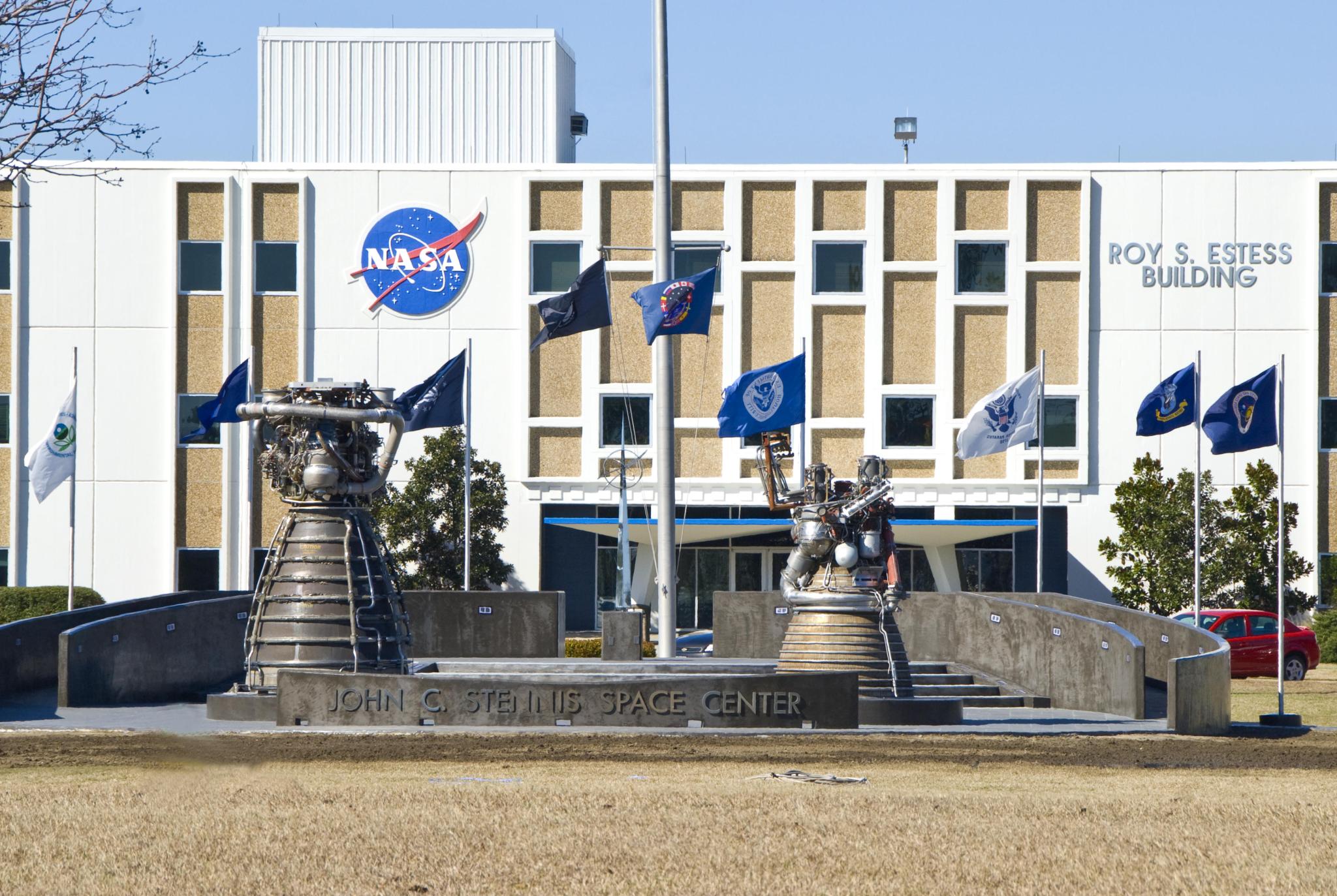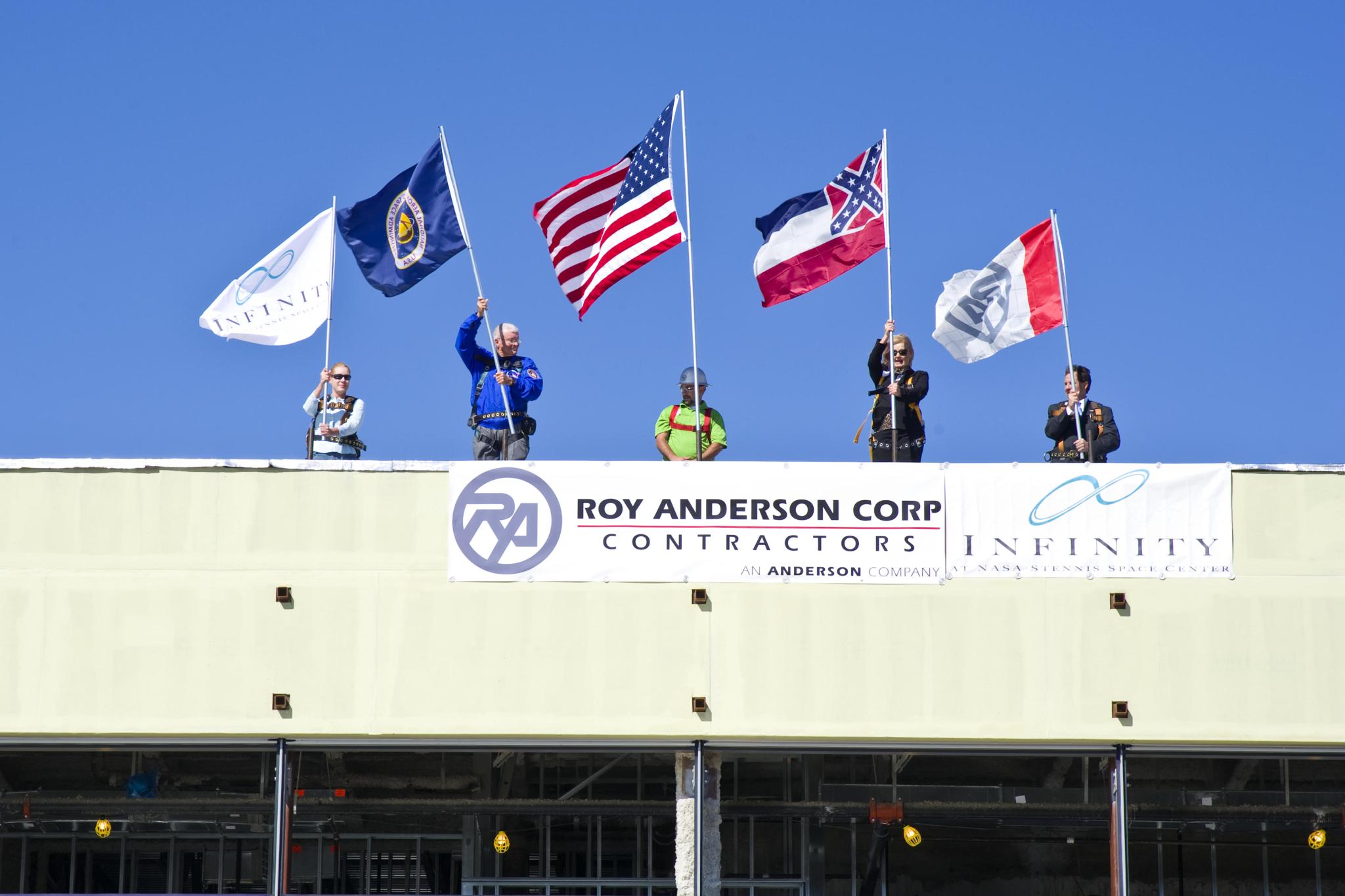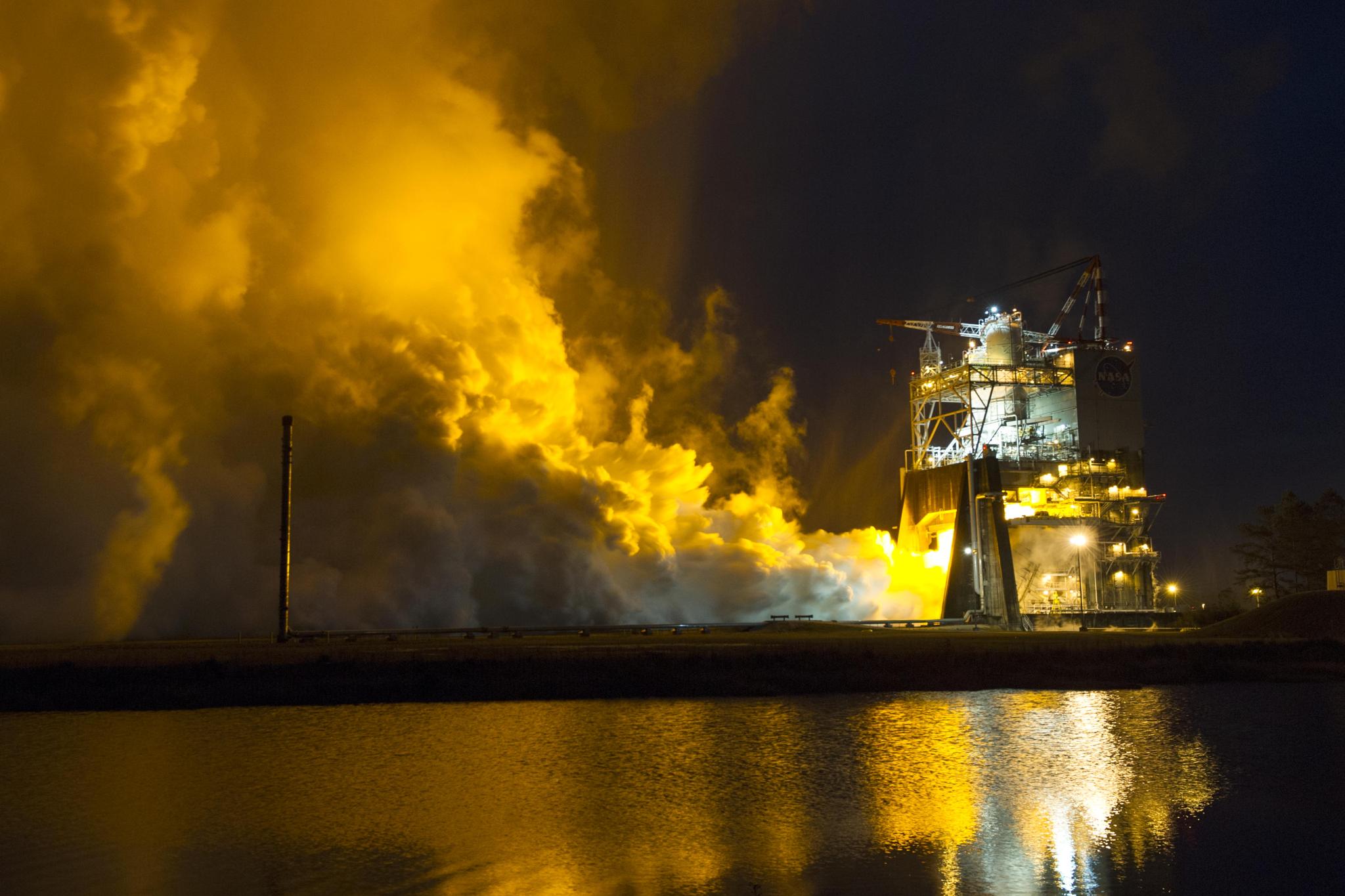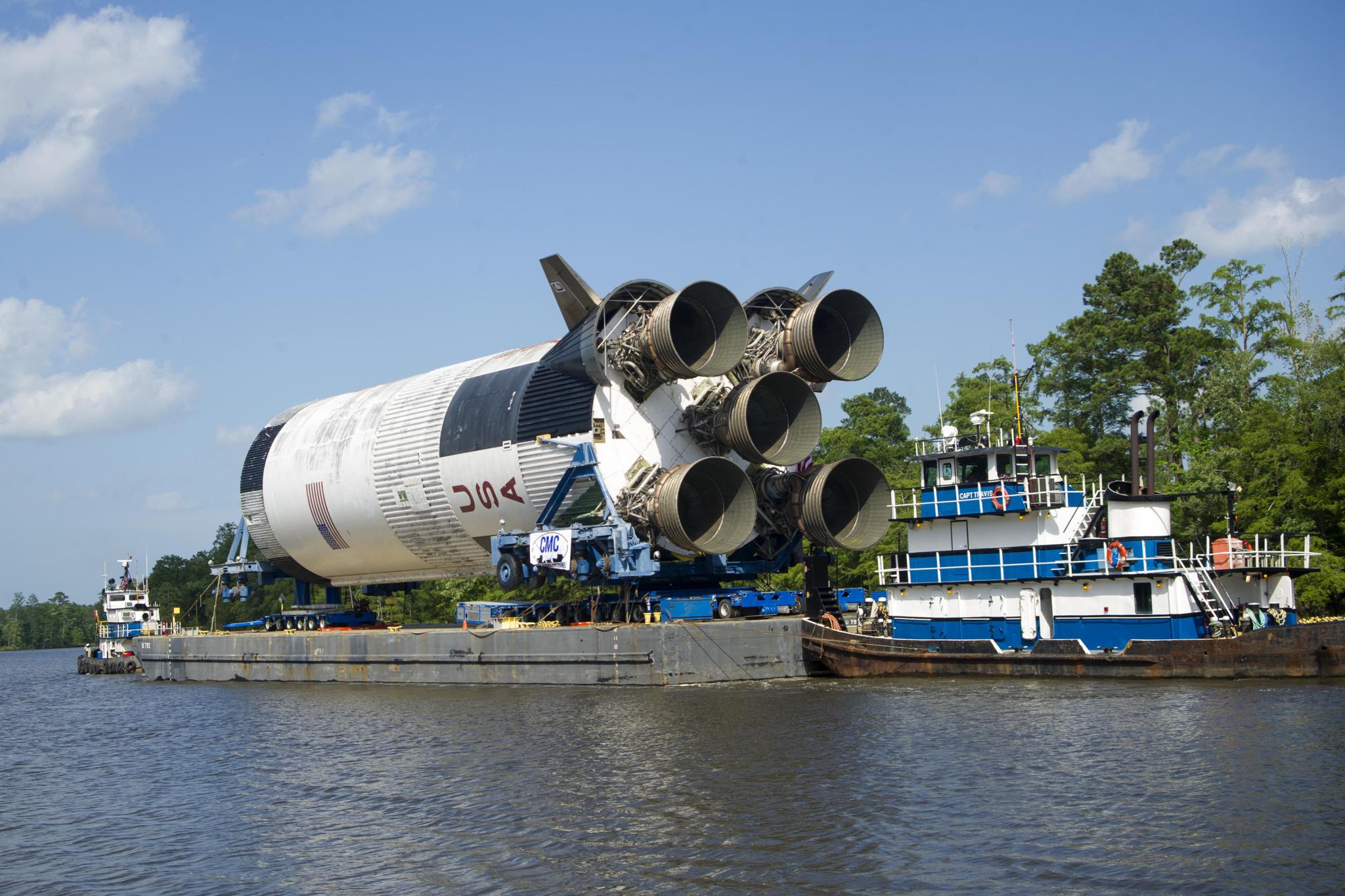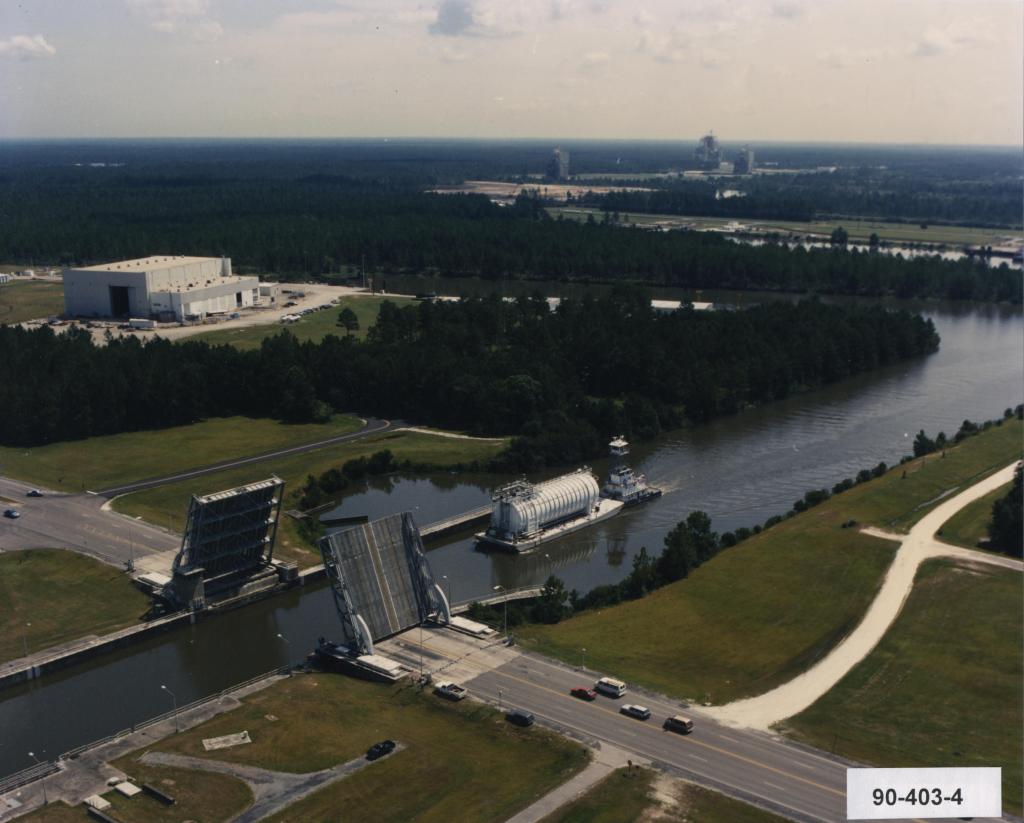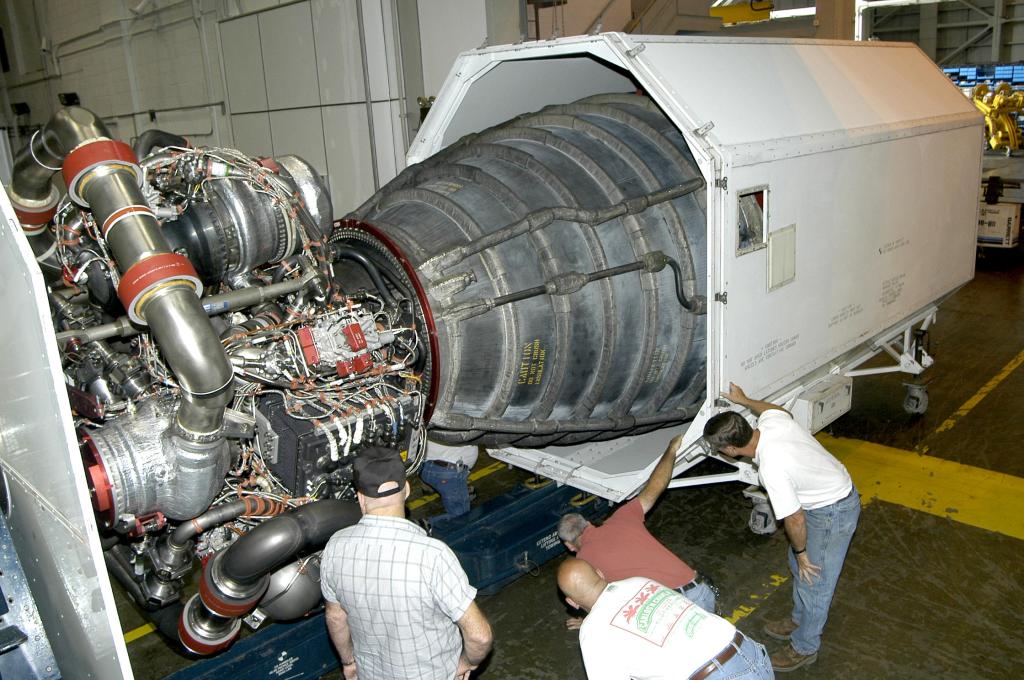2010 – NASA Stennis unveils a partnership with Orbital Sciences Corp. on Feb. 24 to test Aerojet AJ26 engines to power commercial cargo transport flights to the International Space Station.
2010 – Patrick Scheuermann is named director of NASA’s Stennis Space Center on March 1.
2010 – Retired astronaut Fred Haise, a Biloxi native, visits NASA Stennis on April 20 to help employees mark the 40th anniversary of his famous Apollo 13 mission.
2010 – An Aerojet AJ26 rocket engine is delivered on July 14 for installation at the E-1 Test Stand as part of the NASA Stennis partnership to help Orbital Sciences Corporation provide commercial cargo transportation missions to the International Space Station.
2010 – The NASA Stennis education team develops its first-ever teaching curriculum in August to help educate students about mass vs. weight.
2010 – The Stennis education team develops its first-ever teaching curriculum to help educate students about mass vs. weight during August.
2010 – NASA officials cut the ribbon on a new Records Retention Facility on Aug. 24 at NASA Stennis to consolidate and protect records storage.
2010 – NASA Stennis launches a yearlong 50th anniversary celebration with the first presentation in its Legends Lecture Series on Nov 9. NASA publicly announced plans to build a rocket engine test facility in Hancock County, Mississippi on Oct. 25, 1961.
2010 – NASA conducts the first successful test firing of an Aerojet AJ26 rocket engine to be used by Orbital Sciences Corporation to power commercial cargo flights to the International Space Station on Nov 10. The test is conducted on the E-1 Test Stand at NASA Stennis.
2010 – NASA Stennis and community leaders celebrate the “topping out” of the INFINITY Science Center, a 72,000-square-foot science and education facility set to open in 2012, on Nov. 17.
2011 – NASA Administrator Charles Bolden visits Stennis on February 7 to view the test firing of an Aerojet AJ26 rocket engine to be used by Orbital Sciences Corporation to power commercial cargo flights to the International Space Station.
2011 – Space shuttle Discovery completes the STS-133 mission, its final flight to space, on March 9. The shuttle is powered into orbit for the mission by space shuttle main engines No. 2044, No. 2048 and No. 2058, all three of which were tested and proven flightworthy at Stennis.
2011 – The main NASA administration building at Stennis is named in memory of late Director Roy S. Estess on May 2. Stennis officials also announce establishment of the annual Roy S. Estess Public Service Leadership Award.
2011 – Space shuttle Endeavour completes the STS-134 mission, its final flight into space, on June 1. The shuttle is powered into orbit for the mission by space shuttle main engines No. 2052, No. 2061 and No. 2057, all three of which were tested and proven flightworthy at Stennis.
2011 – Space shuttle Atlantis completes the STS-135 mission, its final flight into space and the final mission of NASA’s Space Shuttle Program, on July 21. The shuttle is powered into orbit for the mission by space shuttle main engines No. 2047, No. 2060 and No. 2045, all three of which were tested and proven flightworthy at Stennis.
2011 – NASA conducts a successful engine start test on the next-generation J-2X rocket engine at Stennis, marking the start of the third major test series for the historic A-2 Test Stand on July 26. The J-2X is being developed as an engine that could carry humans into deep space once more.
2011 – Stennis employees mark the end of the 30-year-old Space Shuttle Program with a “wheels stop” celebration during the visit of the STS-135 space shuttle Atlantis crew on August 11.
2011 – NASA marks official transfer of 1.6 million square feet of facility space from the U.S. Army to Stennis on August 24, setting the stage for years of major expansion at the south Mississippi site.
2011 – Stennis leaders and employees plant a time capsule to culminate a year of activities celebrating its 50th anniversary on October 25. NASA publicly announced plans to build the rocket engine test site on Oct. 25, 1961.
2011 – NASA conducts the first 500-second test of the next-generation J-2X rocket engine on November 9, marking an important step forward in its development. The directors of seven NASA agencies visit Stennis to view the test.
2011 – Stennis ranks second out of 240 organizations and at the top of NASA centers as the best place to work in the federal government on November 16, according to the Partnership for Public Service survey.
2011 – NASA concludes the initial 10-test series of firings at Stennis on the next-generation J-2X rocket engine being developed for NASA on December 14.
2012 – NASA begins a series of tests at NASA Stennis on the new J-2X powerpack component to provide critical data for development of the new rocket engine on Feb. 15.
2012 – The ribbon is cut for the opening of INFINITY Science Center on April 13. The 72,000-square-foot visitor center features space and Earth science artifacts and activities.
2012 – NASA Administrator Charles Bolden presents the space agency’s Small Business Administrator’s Cup Award to NASA Stennis in recognition of its stellar small business program for fiscal year 2011 on April 20.
2012 – NASA engineers conduct a 1,150-second test of the J-2X powerpack at NASA Stennis on June 8, marking the longest-duration test firing in the facility’s A Test Complex.
2012 – A series of tests are conducted in the NASA Stennis E Test Complex on a new Project Morpheus engine on June 25. The liquid methane, liquid oxygen engine will power the Morpheus prototype lander, which could one day evolve to carry cargo safely to the Moon, asteroids, or Mars surfaces.
2012 – NASA engineers conduct a 1,350-second test of the J-2X powerpack at NASA Stennis on July 24, marking the longest-duration test firing in the facility’s A Test Complex. The test breaks a record of 1,150 seconds, which engineers had set just weeks earlier during a June 8 powerpack firing.
2012 – NASA Stennis marks a historic moment with the first instance of two female engineers conducting rocket engine tests on the same day at the site on Aug.16.
2012 – Dr. Richard Gilbrech is named director of NASA’s Stennis Space Center on Sept. 25.
2012 – NASA records a historic week (Nov. 5-9) in the E Test Complex at NASA Stennis, conducting tests on three different rocket engines/components on three E Complex test stands. The 27 total tests include firings on all three stands during a 24-hour period Nov. 6-7 and a nine-hour-plus period on Nov. 8.
2012 – For the second consecutive year, NASA Stennis ranks at the top of NASA centers and second out of 292 federal organizations as the best place to work in the federal government, according to a Partnership for Public Service survey on Dec. 13.
2012 – NASA Stennis engineers conduct the final test-firing of the J-2X powerpack assembly, an important component of the next-generation engine being developed for the space agency, on Dec. 13.
2013 – NASA conducts a test of J-2X engine No. 10002 on the A-2 Test Stand at NASA Stennis on Feb. 15, marking the start of a new round of test firings for the next-generation engine.
2013 – Orbital Sciences Corporation launches its Antares rocket on its first test flight, powered by a pair of Aerojet AJ26 engines tested at NASA Stennis on April 21. Orbital partnered with NASA to provide commercial cargo flights to the International Space Station.
2013 – NASA installs next-generation J-2X engine No. 10002 on the A-1 Test Stand at NASA Stennis for a series of gimbal, or pivot, tests on May 13. It marks the first full engine to be installed on the test stand in almost a decade.
2013 – NASA performs the first in a series of gimbal tests on next-generation J-2X engine No. 10002 on the A-1 Test Stand at NASA Stennis on June 14. The engine is pivoted just as it must move during an actual flight to ensure proper trajectory.
2013 – NASA completes its series of gimbal, or pivot, tests on the next-generation J-2X rocket engine with a 330-second hot fire on the A-1 Test Stand at NASA Stennis on Sept. 5. Following the test, the stand will be modified to test RS-25 engines that will power NASA’s new SLS (Space Launch System) rocket.
2013 – NASA engineers conduct three days of tests on a fourth-generation HD4B engine on the E-3 Test Stand, including several tests using a 3-D-printed nozzle Sept. 9-13. The engine is designed to power a prototype Project Morpheus planetary lander that could evolve to carry cargo and technologies safely to space destinations such as asteroids and Mars.
2013 – Orbital Sciences Corporation launches an Antares rocket and Cygnus spacecraft on a test flight cargo mission to the International Space Station on Sept. 18. The core stage of the vehicle is powered by two Aerojet Rocketdyne AJ26 engines tested at NASA Stennis.
2013 – NASA begins a new round of tests on the next-generation J-2X rocket engine on Nov. 6 on the A-2 Test Stand.
2013 – For the third year in a row, NASA Stennis ranks at the top of NASA centers and second out of 300 federal agency subcomponents as the best place to work in the federal government, according to a Partnership for Public Service survey on Dec. 18.
2014 – Orbital Sciences Corporation launches an Antares rocket and Cygnus spacecraft on its first of eight planned cargo missions to the International Space Station under NASA’s Commercial Resupply Services contract on Jan. 9. The first stage of the vehicle is powered by two Aerojet Rocketdyne AJ26 engines tested at NASA Stennis..
2014 – NASA and Space Exploration Technologies Corp. (SpaceX) cut the ribbon at the E-2 Test Stand at NASA Stennis to mark the beginning of a new testing partnership on April 21. SpaceX partnered with NASA to test components of its methane-fueled Raptor rocket engine on the stand.
2014 – Orbital Sciences Corporation launches its Antares rocket with the Cygnus spacecraft onboard for its second contracted cargo delivery mission to the International Space Station on July 13. The launch was powered by a pair of Aerojet Rocketdyne AJ26 rocket engines tested at NASA Stennis.
2014 – NASA installs RS-25 rocket engine No. 0525 on the A-1 Test Stand at NASA Stennis in preparation for a series of developmental tests on July 17. NASA spent almost a year preparing the A-1 stand for the test series, which represents a major milestone in the agency’s return to deep-space missions.
2014 – NASA takes a big step forward in preparations to test its new SLS (Space Launch System) core stage with a 20-foot repositioning of the Main Propulsion Thrust Article (MPTA) structure on the B-2 Test Stand at NASA Stennis Aug.7-8. The 61-foot-high, 1.2-million-pound MPTA was built for testing Apollo and Saturn rocket stages and had to be shifted to accommodate the larger SLS core stage. It also must be extended 100 feet higher.
2014 –NASA completes the first flight of its new Orion spacecraft on a United Launch Alliance Delta IV Heavy rocket powered by three RS-68 engines tested at NASA Stennis on Dec. 4.
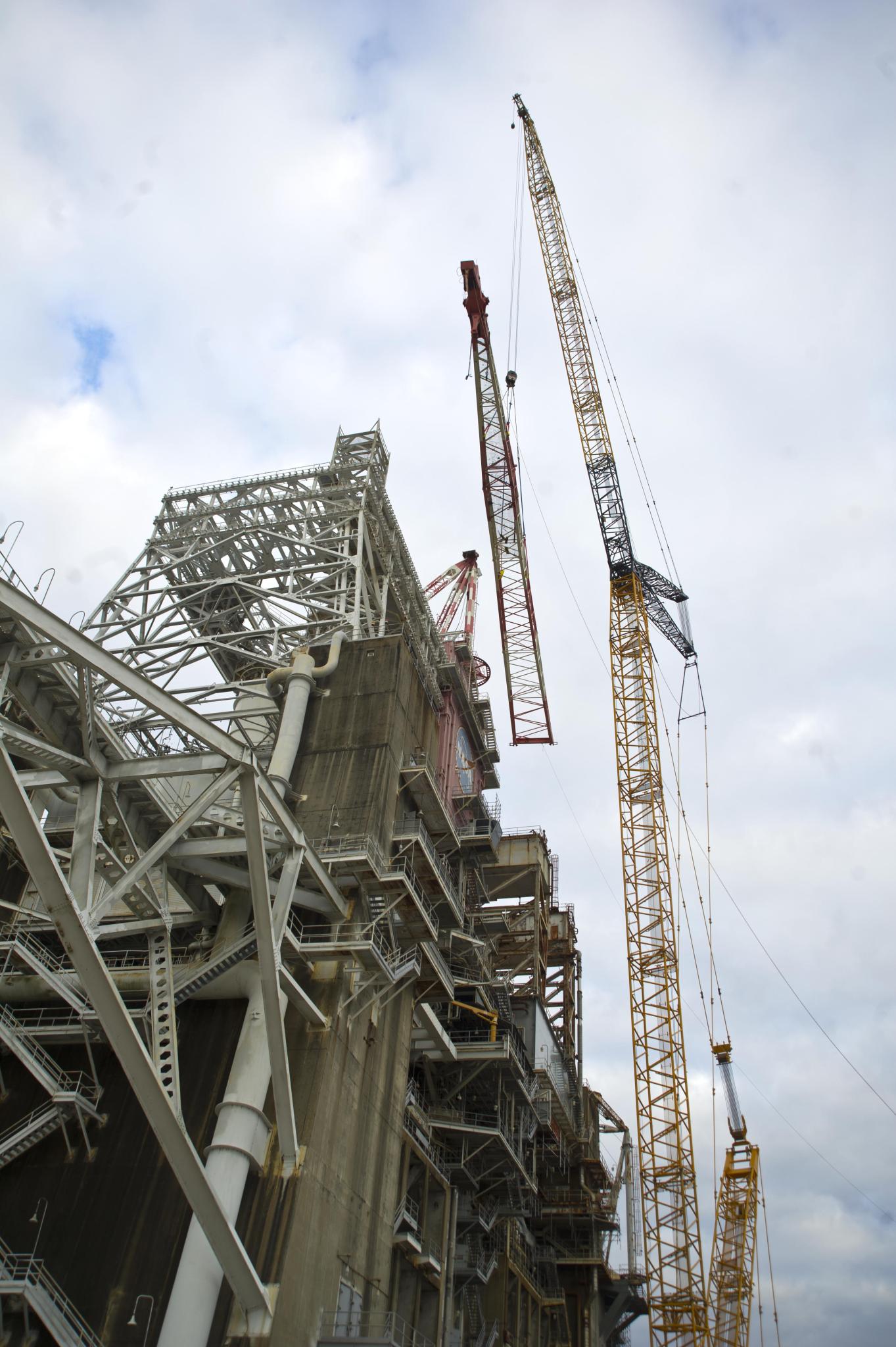
2015 – NASA conducts the first test of a RS-25 rocket engine with a test firing on the A-1 Test Stand at NASA Stennis on Jan. 9.
2015 – NASA “tops out” structural steel work on the B-2 Test Stand in preparation for testing the SLS (Space Launch System) core stage in August. The stand’s existing steel framework had to be strengthened and extended 100 feet higher to accommodate the larger SLS stage.
2015 – NASA completes the first developmental test series on the RS-25 engines that will power the new SLS (Space Launch System) rocket on Aug.27. The series concludes with a 535-second test on the A-1 Test Stand at NASA’s Stennis Space Center.
2015 – NASA takes the next big step on its journey to Mars with installation of the first RS-25 flight engine, No. 2059, on the A-1 Test Stand at NASA’s Stennis Space Center on Nov. 4. The engine will be tested for use on the Space Launch System’s Exploration Mission-2.
2016 – NASA marks a major milestone in its journey to Mars with the first test of an RS-25 flight engine on the A-1 Test Stand at NASA’s Stennis Space Center on March 10. The engine was tested for a full duration 500 seconds.
2016 – NASA’s Stennis Space Center celebrates the homecoming of its Gator mascot on April 20, originating in the early site construction years and featured in Lagniappe commentaries from 1977 until 2000. Gator returns to the site as Lagniappe guest columnist.
2016 – NASA’s Stennis Space Center celebrates the 50th anniversary of rocket engine testing on April 23. The first test at the site took place April 23, 1966, with a 15-second firing of a Saturn V rocket second stage on the A-2 Test Stand.
2016 – The Saturn V S-IC-15 rocket stage makes a historic return to NASA’s Stennis Space Center, en route to permanent display at INFINITY Science Center, on June 16. The rocket stage first traveled the waterway route to NASA Stennis for testing in 1970. After its Apollo 19 mission was canceled, the stage remained at NASA’s Michoud Assemby Facility in New Orleans until its transfer to INFINITY.
2017 – NASA conducts a test of the first RS-25 engine controller on March 23 that will be used on the initial flight of the agency’s new SLS (Space Launch System). The 500-second test on the A-1 Test Stand at NASA’s Stennis Space Center marks a milestone in NASA’s return to deep-space missions.
2017 – NASA’s Stennis Space Center is awarded NASA’s 2017 Small Business Administrator’s Cup for the best overall small business program on May 17. It marks the second time NASA Stennis has earned the cup in the award’s eight-year history.
2018 – NASA tests an RS-25 engine on the A-1 Test Stand at NASA Stennis at the highest power level ever, reaching 113 percent of original thrust level, on Feb. 21. The test helped verify the engines can operate at the increased power level needed for launch of the new SLS (Space Launch System) vehicle.
2018 – NASA’s Stennis Space Center signed its first-ever Commercial Space Launch Act on March 21 with Relativity Space, a private company focused on a new approach to developing small rocket launch vehicles. The agreement grants Relativity exclusive use of the E-4 Test Complex at NASA Stennis to develop multiple vertical engine test stands, along with a second- and first-stage hold-down test stand, for testing its engines and vehicles.
2018 – A combined team of NASA, Defense Advanced Research Projects (DARPA), Aerojet Rocketdyne, Boeing and Syncom Space Services engineers and operators achieved an unprecedented accomplishment during an 11-day period in late June and early July by conducting 10 tests of an AR-22 rocket engine 10 times in a 240-hour period. The test was part of DARPA’s effort to develop an experimental spaceplane as a low-cost, reusable system for delivering small satellites into orbit.
2018 – NASA effectively caps a six-year process in November, reaching an all-but-complete state of readiness for testing the core stage of the agency’s new SLS (Space Launch System) rocket. With a pair of propellant cold flows, a key gaseous nitrogen test and completion of all but a handful of rescheduled tasks, B-2 Project Manager Barry Robinson declares the last major steps of B-2 Test Stand activation for SLS core stage testing have been completed.
2019 – A successful test culminates four-plus years of testing for the RS-25 engines that will send the first four SLS (Space Launch System)rockets into space on April 4. The hot fire on the A-1 Test Stand completes acceptance testing of all 16 former space shuttle main engines that will help launch the first four SLS missions, developmental and flightworthy testing for new RS-25 engine controllers for the first four missions and 51 months of testing that demonstrated RS-25 engines can perform at the higher power level needed to launch the heavy-lift SLS rocket.
2019 – NASA clears a milestone in preparation for Green Run testing of its SLS (Space Launch System)) core stage with an Aug. 23-24 lift and installation of the core stage pathfinder simulator onto the B-2 Test Stand at NASA’s Stennis Space Center. The lift and installation of the pathfinder – a size and weight replica of the SLS core stage – helps Stennis teams prepare for testing the SLS flight core stage that will fly on the Artemis I test mission. The pathfinder arrived at NASA Stennis in early May, and site crews spent the summer months practicing handling and lift techniques.
2019 – NASA clears a key milestone in preparation for Green Run testing of its SLS (Space Launch System) core stage with a Dec. 12 comprehensive sitewide “stress test” of propulsion testing facilities at NASA’s Stennis Space Center. The 24-hour test, midnight to midnight, involved operations at various test complex facilities during a run-up to a simulated afternoon core stage “test” Dec. 14. The test demonstrates the stage is fully set for the SLS core stage.
Chronology of Events
Explore the list of significant events in John C. Stennis Space Center History.


























